As we prepare for the release of "Midway," many Military.com commenters have wondered whether the new movie can possibly compare to the 1976 hit "Midway" that starred Charlton Heston. We decided to revisit that earlier movie and found out some amazingly weird stuff.
The 1976 "Midway" looked a lot like World War II movies from the 1950s and 1960s, starring Charlton Heston, Henry Fonda, James Coburn, Glenn Ford, Robert Mitchum, Hal Holbrook, Robert Wagner and a host of other fading stars of an earlier era.
1. "Midway" was a giant summer hit.
"Midway" was released in June 1976 and became the ninth biggest movie of the year, coming in between Clint Eastwood's third Dirty Harry movie "The Enforcer" at No. 8 and the original "The Bad News Bears" starring Walter Matthau at No. 10.
It only took $46.2 million in box office to crack the top 10 that year. 1976 was a last gasp for this kind of Old Hollywood movie. "Jaws" had racked up a shocking $260 million in the summer of 1975, and "Star Wars" would earn $460 million in 1977. Both movies would change the way Hollywood did business forever and usher in the blockbuster era we still enjoy/endure today.
2. Sensurround was a huge selling point.
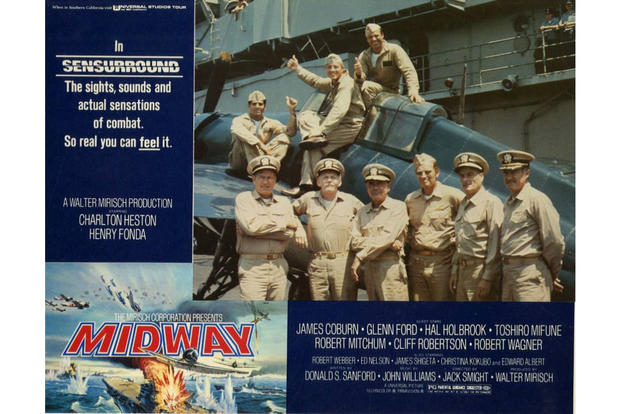
"Midway" was my first war movie. I was a little kid who bought a ticket because I loved Universal's crazy in-theater special effect. Sensurround debuted with the 1974 disaster movie "Earthquake," and "Midway" was the touted follow-up.
Theaters installed giant, low-frequency Cerwin-Vega speakers that generated a wicked rumble that made the entire theater seem to vibrate. The effect was deployed during battle scenes in "Midway" and made the theater experience one of the most intense anyone had seen in 1976.
Sensurround would probably seem cheesy to kids who grew up with IMAX and Dolby Atmos sound, but it filled kids with wonder back in the old days. Universal used it again for the release of "Rollercoaster" in 1977, but that was pretty much it for the system in the USA. A pair of feature films edited together from episodes of the "Battlestar Galactica" TV series got the Sensurround treatment for international release, but then the magic disappeared never to be heard (or felt) again.
3. The battle scenes are all recycled footage from other movies.
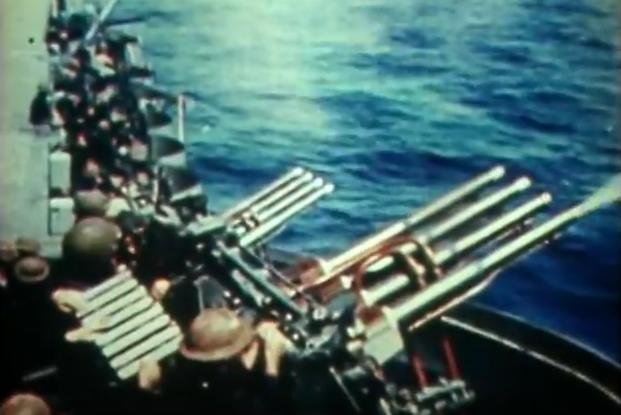
As you watch the spectacular FX in the 2019 version of "Midway," remember that Universal cut every possible corner in 1976. Much of the battle footage was licensed from 20th Century Fox's 1970 movie "Tora! Tora! Tora!" Producers padded things out with scenes from the 1960 Japanese production "Storm Over the Pacific."
But wait, there's more: The Zero crash into the bridge of the USS Yorktown originally appeared in the 1956 Universal WWII movie "Away All Boats" and Doolittle's raid on Tokyo is recycled from the 1944 movie "Thirty Seconds Over Tokyo."
That excellent dogfight footage? You should recognize that from the 1969 movie "The Battle of Britain." "Midway" even includes scenes from the John Ford's spectacular 1942 documentary "The Battle of Midway."
4. Most of the lead actors could have served at Midway.
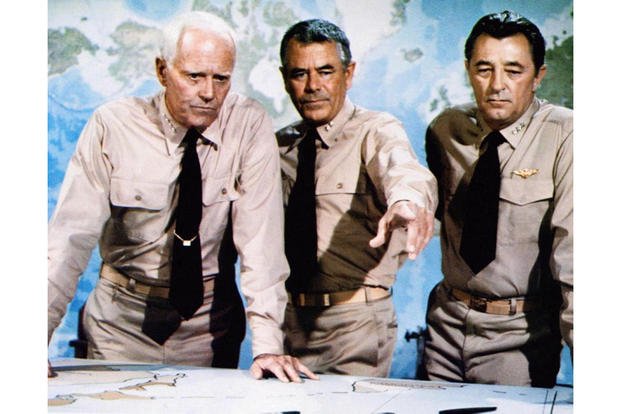
The cast of Midway is old. Like, really old. Henry Fonda, who portrays Adm. Chester Nimitz, was 71 years old when the movie was released. He served in the Navy during World War II and narrated Ford's Midway documentary. Nimitz was actually 67 at Midway, so that casting's close to accurate.
Charlton Heston, who plays the lead, was a rapidly aging 52. In the seven years since "Planet of the Apes," he'd become a middle-aged man, and you've most definitely got to suspend your disbelief if you're going to believe his character would ever be allowed near a plane. Heston was also a WWII veteran who served in the Army Air Forces.
More World War II veterans who worked on "Midway": Glenn Ford (60) served in the Marine Corps, Hal Holbrook (51) joined the Army, Cliff Roberston (52) served in the Merchant Marine, Robert Webber (51) served in the Pacific with the Marines, screenwriter Donald S Sanford (58) served in the Navy and director Jack Smight (51) actually flew missions in the Pacific for the Army Air Forces. Robert Mitchum (58) didn't serve but worked as a machinist in a Lockheed Aircraft factory.
James Coburn (38) and Robert Wagner (36) played the young officers in the film.
"Midway" the movie was released 34 years after the Battle of Midway. Sure, Nimitz and Halsey were pretty old, but the men who fought and died that day were overwhelmingly under the age of 30.
5. Capt. Matt Garth is a totally made-up character.
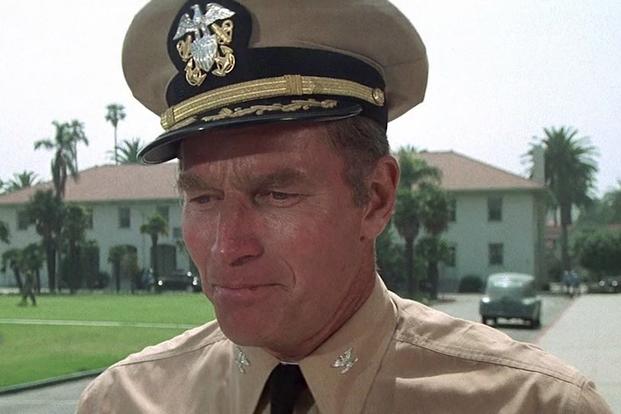
As the new 2019 "Midway" movie reminds us, there are plenty of real-life heroes from Midway whose stories deserve to be told. Old Hollywood decided that the real tale needed some spice and created Capt. Matt Garth, a divorced officer whose rebellious son wants to marry a Japanese-American girl. Her parents have been detained and could be on their way to a detention center.
In between bouts of yelling that his father Just Doesn't Understand, young Lt. Tom Garth (played by Edward Albert, 25) expects dad to help save Haruko's family from the camps.
At the end of the day, the young guys can't finish the job, and old man Garth has to climb into a plane and take care of the Japanese himself. Garth is a hero, but he's a Hollywood hero whose made-up story pales in comparison to real-life pilots like Dick Best or Dusty Kleiss.
6. All of the Japanese characters speak English.
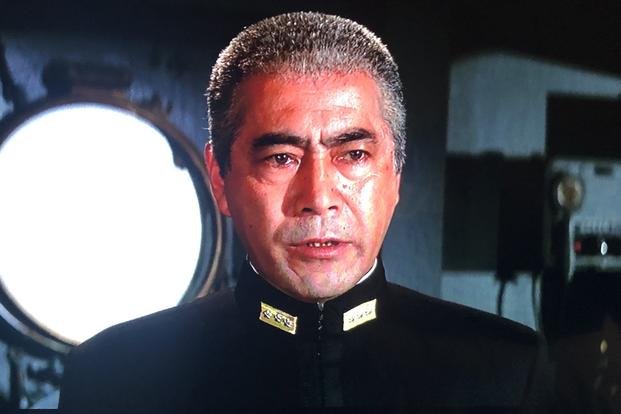
How do you rope in audiences who don’t have the patience for foreign-type films? Drop the subtitles and just have your Japanese officers speak English to each other. Sounds like a plan, except that the great Toshiro Mifune, the actor who played Adm. Yamamoto, had an accent so thick that audiences couldn’t understand him.
The producers hired the great American voice actor Paul Frees to dub his lines. WWII veteran Frees served in the Army and fought at Normandy, where he was wounded in action. He had more than 350 credits, but a few highlights include voicing Boris Badenov in the Bullwinkle cartoons, Burgermeister Meisterburger in the Rankin/Bass special “Santa Claus is Comin’ to Town,” John Lennon and George Harrison in The Beatles cartoon series, the Pillsbury Doughboy and Boo Berry from the cereal commercials. If you were a kid back then, you know his voice.
7. The three-hour extended TV version is now lost.

"Midway" was such a hit that Universal went back and shot an additional 45 minutes of footage for a three-hour version that aired on NBC. There was some additional battle footage that covered the warm-up Battle of the Coral Sea, but mostly there was an invented new plot involving Capt. Garth's girlfriend Ann (played by Susan Sullivan, aged 34 and only 18 years younger than Heston).
Yep, the network wanted some soapy romance so that ladies would watch the epic two-night TV event. Heston is even more frustrated with the world because the woman he left Tom's mom for is hassling him about getting out of the Navy.
No one at Universal or NBC was any good at predicting the future, so they saved some cash and shot the additional scenes in the television 4:3 image ratio instead of the widescreen ratio used for the original movie.
That makes it impossible to assemble a full-length version of the movie these days. There are roughly 10 minutes of the lost cut included as deleted scenes on the "Midway" Blu-ray, and all those scenes feature Matt and Ann getting romantic and arguing. They look like they were shot on leftover sets from "Columbo," and I'm not sure we're missing anything by only getting to see the original theatrical version.
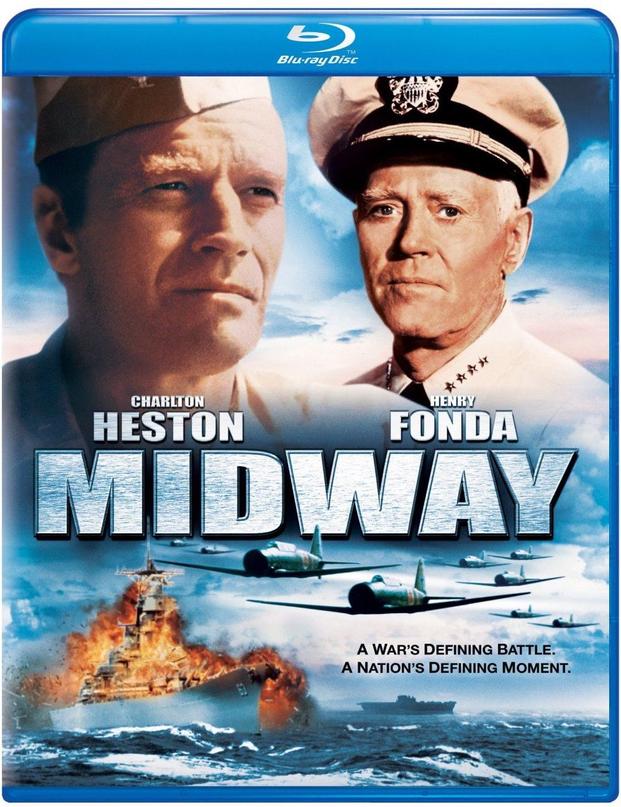
Is the 1976 "Midway" a classic? Not really. It's the last big WWII movie until "Saving Private Ryan" in 1998, but "Midway" doesn't begin to compare to that masterwork. It's definitely got its charms as an old-school movie made when New Hollywood films like "The Godfather," "The French Connection," "Dog Day Afternoon" and "Taxi Driver" were changing what audiences expected when they went to the movies.
The new "Midway" takes its history seriously and manages to tell the story from Pearl Harbor through Midway in a concise two hours. There's a focus on the men who fought, and the officers who point at maps are reduced to supporting roles. Each "Midway" speaks to the era in which it was made, and the new one will make a lot of folks glad that we had a chance to enjoy a different take on the era.
















